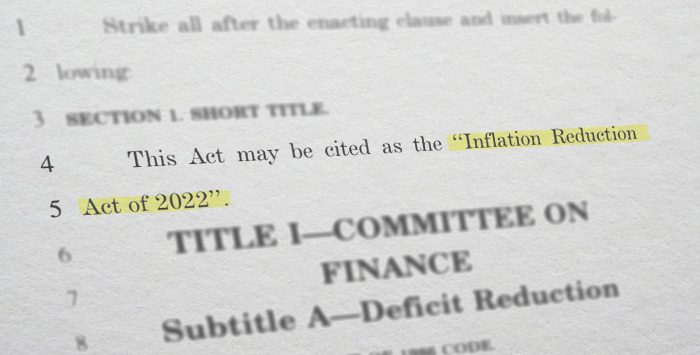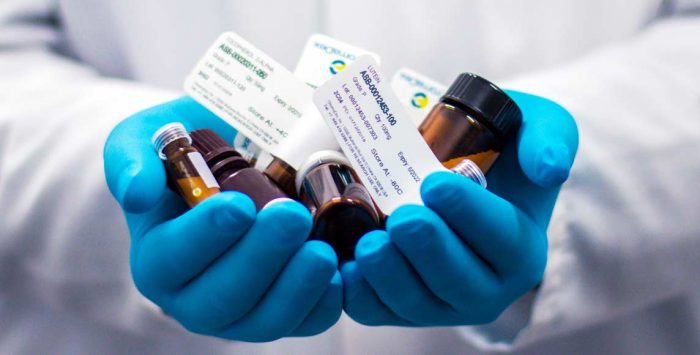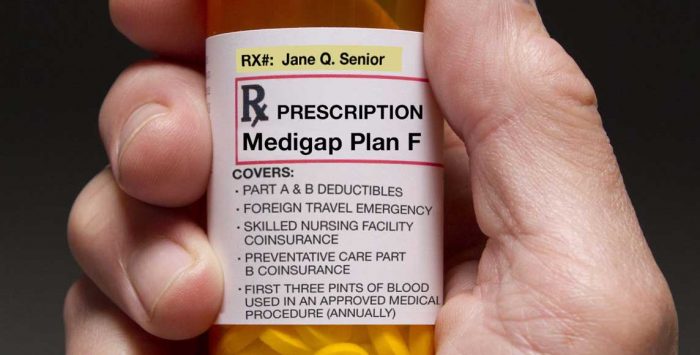The Inflation Reduction Act (IRA), signed into law in 2022, is reshaping how Medicare covers prescription drugs. Beginning in 2023, a series of changes began to be phased in under the IRA, designed to lower out-of-pocket costs, expand access to vaccines, and rein in drug price increases.
These reforms – which will continue to roll out through 2029 – mean that millions of Medicare beneficiaries are seeing tangible improvements in how much they pay at the pharmacy and how their coverage works.
Let’s take a look at how the IRA has changed coverage for Medicare beneficiaries:
Inflation Reduction Act provisions that took effect in 2023
The first improvements took effect in January 2023. At that point (and going forward):
Copays for all insulin products are capped at $35/month for all Part D plans.
Under pre-IRA rules, some Medicare beneficiaries already had this benefit for some insulin products, thanks to the Senior Savings Model (SSM), which required participating Medicare Part D plans to offer select insulin products at $35/month or less. This opt-in program had been in use since 2021, and roughly 17 million Medicare beneficiaries were enrolled in Part D plans that participated in the SSM.
Under the IRA, the $35/month copay cap for insulin was extended to include all Part D plans (including Part D coverage that’s integrated with most Medicare Advantage plans) and all insulin products, including those dispensed via insulin pumps.. Note that GLP-1 receptor agonists are not insulin and thus are not subject to this rule. (Here’s more about Medicare Part D coverage of GLP-1 receptor agonists.) Note also that Part D plans still have formularies that determine which insulin products they cover; different plans cover different insulins.
Recommended vaccines are free for Medicare Part D enrollees
Under pre-IRA rules, vaccines covered under Medicare Part B (COVID, flu, pneumonia, hepatitis B) were already free. But vaccines covered by Part D – including Tdap (tetanus, diphtheria, pertussis) and shingles vaccines – had cost-sharing that varied from one plan to another. This meant Medicare beneficiaries could be paying hundreds of dollars in out-of-pocket costs in order to get the vaccines that the CDC’s Advisory Committee on Immunization Practices (ACIP) recommended for them.
The IRA’s new rules brought Medicare Part D in line with individual/family and employer-sponsored health plans. With the exception of grandfathered plans, these policies have been required to cover all ACIP-recommended vaccines without any cost-sharing for well over a decade, thanks to the Affordable Care Act (ACA). Since 2023, thanks to the IRA, people with Medicare Part D have had the same benefit.
Drug manufacturers pay rebates when price increases exceed the rate of inflation
Starting in 2023, drug manufacturers have had to pay rebates to Medicare if the price of their prescription drugs increases faster than the rate of inflation (CPI-U). This applies to all but the least expensive Part D drugs, as well as single-source drugs and biologicals that are covered under Part B. (Most drugs are covered under Part D, but some are covered under Part B instead).
Since April 2023, Medicare Part B enrollees could have lower out-of-pocket costs (than they would otherwise have had) for certain Part B-covered drugs if the drug price increases have outpaced inflation. Coinsurance under Medicare Part B is 20%, but beneficiaries who use these medications pay a coinsurance rate that’s less than 20% (the specific percentage varies from one drug to another).
Note that many Medicare beneficiaries have supplemental coverage, from Medigap, Medicaid, or an employer-sponsored plan, that will pay their Part B out-of-pocket costs. So the out-of-pocket impact for enrollees depends on whether they pay their own Part B coinsurance.
A similar rebate system already operated in the Medicaid program, and plays a significant role in keeping drugs costs lower for Medicaid.
If a Medicare Part B enrollee receives a medication that has a reduced coinsurance, their bill will simply reflect the lower out-of-pocket costs. But for those who are curious about which drugs these are, CMS has been publishing the details each quarter. For 2023, 2024, and the first quarter of 2025, CMS published quarterly fact sheets that listed the Part B drugs subject to a rebate, and indicated their reduced coinsurance amount (ie, something less than 20%). Starting with the second quarter of 2025, the coinsurance amounts are instead simply included in CMS’s quarterly average sales price (ASP) Pricing Files.
Inflation Reduction Act provisions that took effect in 2024
These additional improvements took effect starting in 2024:
The 5% coinsurance in the Part D catastrophic coverage level was eliminated.
Prior to 2024, Medicare Part D enrollees had to pay up to 5% of the cost of their covered drugs once they reached the catastrophic coverage level. But starting in 2024, due to the IRA, Part D enrollees no longer to pay any out-of-pocket costs for covered medications after they reached the catastrophic coverage level. For Part D drug spending, this effectively resulted in an out-of-pocket cap of about $3,250 in 2024(as noted below, this was further reduced starting in 2025).
The cost-structure for Medicare Part D was fairly complicated before the IRA’s reforms. The ACA “closed” the Part D donut hole, but enrollees’ costs still changed when they hit the initial spending threshold where the donut hole used to begin (as described below, the IRA fully eliminated the donut hole as of 2025). And although costs were (and still are) split between the enrollee, the plan, and the manufacturer (with different splits depending on how much the person has spent that year), actual out-of-pocket costs were much higher before 2024 for some enrollees whose costs pushed them into the catastrophic coverage level, where they paid 5% coinsurance without any cap on how much they spent.
Under the IRA, starting in 2024, enrollees no longer had any out-of-pocket costs for covered drugs once they reached the catastrophic coverage level. The amount paid by Part D plans increased to cover the amount that was previously paid by enrollees.
The full Low-Income Subsidy (Extra Help) became available to more beneficiaries.
The Low-Income Subsidy, also known as Extra Help is a program that helps pay Part D coverage and prescription out-of-pocket costs for enrollees with limited income and assets.
Prior to 2024, Extra Help was available either partially or in full, depending on income and assets: Full Extra Help was available to beneficiaries with income up to 135% of the federal poverty level , and partial Extra Help was available to beneficiaries with income up to 150% of the poverty level, with higher asset/resource limits for partial Extra Help eligibility.
Under the IRA, starting in 2024, full Extra Help eligibility was extended to enrollees with income up to 150% of the federal poverty level (FPL), as long as their assets didn’t exceed the asset limits. (As of 2025, 150% of FPL in the continental U.S. is $23,475 for a single individual and $31,725 for a married couple. The asset limits for Extra Help in 2025 are $17,600 for a single individual and $35,130 for a married couple. These numbers are adjusted annually.)
Full Extra Help means these beneficiaries will pay no premiums for the Part D benchmark plan, have no Part D deductible, and will only pay copays at the pharmacy of $4.90 for generic drugs and $12.15 for brand-name drugs in 2025.
Annual Part D premium increases are limited.
Under the IRA, from 2024 through 2030, the national base beneficiary premium for Part D coverage can’t increase by more than 6% per year.
For perspective, the national base beneficiary premium is $36.78/month in 2025, and will increase to $38.99/month in 2026. The national base beneficiary premium is essentially an average premium amount for standard Part D coverage. The amount of the Part D late enrollment penalty is based on the cost of the base beneficiary premium, which is why the penalty amount changes each year. But when it comes to the premiums that people pay for Part D coverage, there is wide variation from one plan to another. In 2025, premiums for national Part D plans vary from as little as $3/month to more than $100/month.
The IRA’s limit on base beneficiary premium increases helps to prevent insurers from pushing the cost of the new coverage requirements onto beneficiaries in the form of higher premiums. But the IRA does not mean that every plan’s premium increases are capped at 6% per year. This brief from CMS explains how the base beneficiary premium is used to calculate plan-specific premiums for each plan’s basic benefit. For perspective, CMS announced in 2023 that the base beneficiary premium for 2024 would be $34.70. Without the 6% cap, if the calculation had been based just on bids submitted by the carriers, it would have been $39.35.
Inflation Reduction Act provisions that took effect in 2025
One of the most highly anticipated IRA improvements took effect in 2025, capping out-of-pocket costs under Medicare Part D at $2,000. As noted above, the elimination of the 5% coinsurance in the catastrophic level of coverage effectively implemented a Part D out-of-pocket cap of about $3,250 in 2024. But in 2025, out-of-pocket costs for drugs covered under Part D are capped at $2,000 for all enrollees. This includes the deductible and any copays or coinsurance that they pay. The legislation clarified that the $2,000 cap could increase in subsequent years if Medicare’s per-enrollee drug spending increases. For 2026, the Part D out-of-pocket cap is $2,100.
As of 2025, the Part D coverage gap (donut hole) phase was eliminated. Standard Part D coverage now has just three phases: the deductible phase, the initial coverage phase, and the catastrophic phase (after the out-of-pocket cap has been reached and the person no longer has any costs for covered drugs).
Since the IRA is shifting more drug costs onto Part D plans, there were concerns that premiums might increase significantly or plans might exit the market for 2025. So CMS introduced a temporary premium stabilization program for Medicare Part D. For 2025, the program gives participating insurers $15/month for each enrollee, to offset what would otherwise have been higher premiums for enrollees, and capped premium increases for participating Part D plans at no more than $35/month for 2025 coverage.
For 2026, CMS opted to continue the temporary Part D premium stabilization program, but with reduced assistance to the insurers. Instead of $15/month for each enrollee, participating insurers will receive $10/month in federal subsidies in 2026. And premium increases for participating insurers are capped at $50/month for 2026, instead of the $35/month limit that applied for 2025 coverage.
Starting in 2025, Part D enrollees also have the option to spread their costs out over the year, paid monthly. This makes it easier for beneficiaries on a fixed income to budget for their prescription costs.
Prior to 2025, beneficiaries with high-cost drugs could hit the catastrophic coverage level early in the year, potentially spending thousands of dollars in a short period of time. Under the new rules, even if a person is going to hit the $2,000 cap ($2,100 in 2026), they have the option to split that into monthly payments of about $167 (about $175 in 2026), instead of paying the whole amount in the first few months of each year. This is detailed in Section 11202 of the IRA.
Drug negotiation provisions phased in starting in 2026
Starting in 2026, Medicare will be able to negotiate pricing with drug manufacturers. This will apply to a fairly small subset of drugs. But they will be some of the most expensive drugs, and relatively few drugs account for the majority of Medicare’s drug spending. The first year of negotiated rates, applicable to 10 drugs, will be 2026. But the process began in 2023:
- In 2023, HHS published a list of 10 Part D drugs that would be subject to negotiation (selected from among the 50 qualifying drugs with the highest spending; various rules apply here, including the fact that the drugs must have been on the market for several years and not have generic alternatives).
- HHS negotiated with the drug manufacturers, following protocol outlined in the IRA. In August 2024, HHS published the “maximum fair price” for those 10 drugs, which will take effect in 2026.
- The process will continue for each of the next few years, with additional drugs added to the negotiation process each year through 2029. Another 15 drugs were added for 2027, 15 more will be added for 2028, and 20 more will be added for 2029. So by that point, there will be 60 drugs subject to negotiation, all of which will be among the most expensive drugs that don’t have generic alternatives. In the latter two years, the newly added drugs will potentially be a mix of Part D and Part B drugs, whereas the negotiated rates in 2026 and 2027 will all apply to Part D drugs.
- The “One Big Beautiful Bill,” enacted in July 2025, included some provisions that expand the number of drugs that aren’t eligible for price negotiations.
- Drug manufacturers that do not comply with the negotiation process will be subject to financial penalties. Alternatively, they can choose to no longer have their drugs covered under the Medicare and Medicaid programs.
The IRA’s Medicare drug pricing provisions will benefit millions of Medicare beneficiaries. The ACA began the process of improving Part D benefit, by gradually closing the donut hole. But the IRA goes much further, and implements some very tangible benefits, particularly for those who need high-cost medications.
Louise Norris is an individual health insurance broker who has been writing about health insurance and health reform since 2006. She has written hundreds of opinions and educational pieces about the Affordable Care Act and Medicare for healthinsurance.org and medicareresources.org.
Footnotes
Tags: Inflation Reduction Act, Medicare Part D, vaccinations









